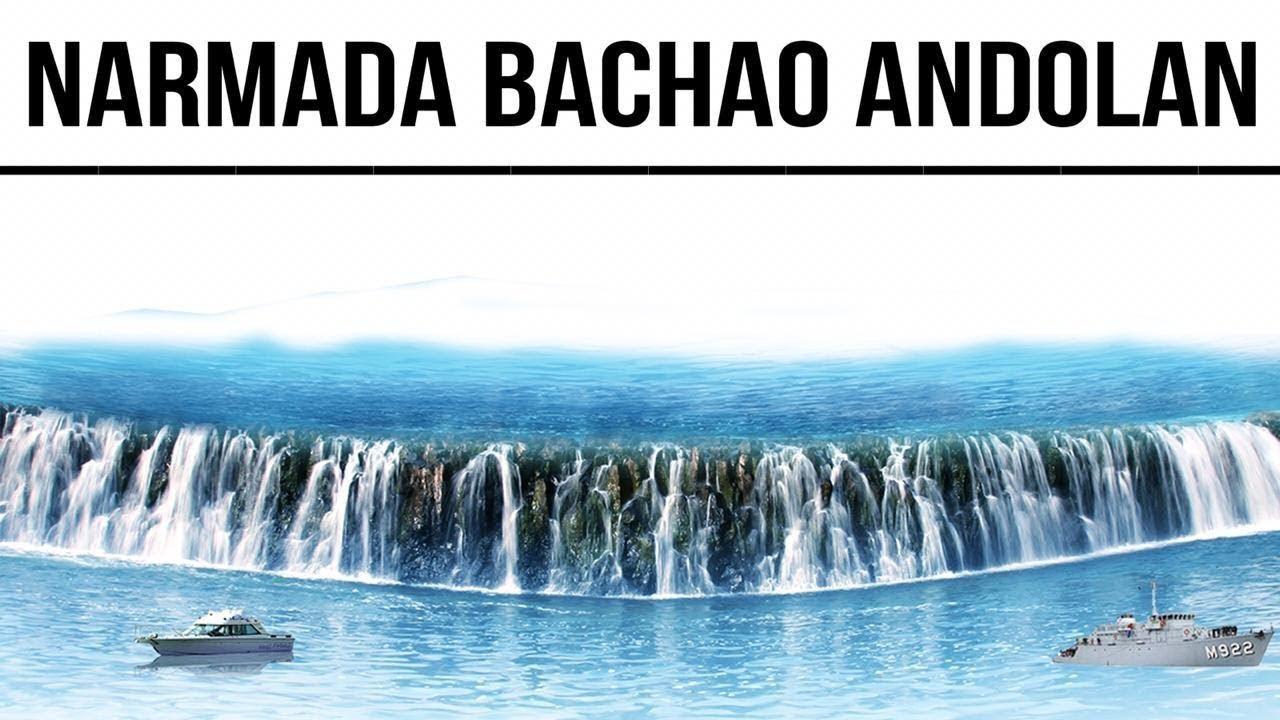Table of Contents
NARMADA
- The Narmada, also called the Rewa and previously also known as Nerbudda,is a river in central India and the sixth longest river in the Indian subcontinent.
- It is the third longest river that flows entirely within India, after the Godavari, and the Krishna. It is also known as “Life Line of Gujarat and Madhya Pradesh” for its huge contribution to the state of Gujarat and Madhya Pradesh in many ways.
- Narmada rises from Amarkantak Plateau near Anuppur district. It forms the traditional boundary between North India and South India and flows westwards over a length of 1,312 km (815.2 mi) before draining through the Gulf of Khambhat into the Arabian Sea, 30 km (18.6 mi) west of Bharuch city of Gujarat.
SARDAR SAROVAR DAM
- The Sardar Sarovar Dam idam on the Narmada river near Navagam, Gujarat in India. Four Indian states, Gujarat, Madhya Pradesh, Maharastra and Rajasthan, receive water and electricity supplied from the dam.
- The foundation stone of the project was laid out by Prime Minister Jawaharlal Nehru on April 5, 1961. The project took form in 1979 as part of a development scheme to increase irrigation and produce hydroelectricity. The dam was inaugurated by Prime Minister Modi on September 17, 2017.
- One of the 30 dams planned on river Narmada, Sardar Sarovar Dam (SSD) is the largest structure to be built. It is one of the largest dams in the world.
NARMADA BACHAO ANDOLAN
- Narmada Bachao Andolan is the most powerful mass movement, started in 1985, against the construction of huge dam on the Narmada river.
- Narmada is the India’s largest west flowing river, which supports a large variety of people with distinguished culture and tradition ranging from the indigenous (tribal) people inhabited in the jungles here to the large number of rural population.
- The proposed Sardar Sarovar Dam and Narmada Sagar will displace more than 250,000 people. The big fight is over the resettlement or the rehabilitation of these people.
- The two proposals are already under construction, supported by the world bank. There are plans to build over 3000 big and small dams along the river.
BACKGROUND
- After the country won its independence, India’s first Prime Minister, Jawaharlal Nehru, began calling for the construction of dams to aid in India’s development.
- Two of the largest proposed dams were Sardar Sarovar and Narmada sagar have been under construction since 1961.
- The Narmada Water Disputes Tribunal approved the Narmada Valley Development Project, which included 30 large dams, 135 medium dams, and 3,000 small dams includin raising the hieght of Sardar Sarovar dam.
- It is a multi crore project that will generate a big revenue for the government. In 1985, the World Bank agreed to finance the Sardar Sarovar dam with a contribution of $450 million without consulting the indigenous communities that were to be displaced.
MOVEMENT
- In 1987, construction began on the Sardar Sarovar dam, and the injustices of the government’s relocation program were exposed: there was not enough land available for redistribution, amenities were low quality, and the settlers had difficulty adjusting to new environments.
- In 1985, after hearing about the Sardar Sarovar dam, Medha Patkar and her colleagues visited the project site and noticed that project work being checked due to an order by the Ministry of Environment and Forests, Government of India.
- The people who were going to be affected by the construction of the dam were given no information but the offer for rehabilitation.Villagers weren’t consulted and weren’t asked for a feedback on the assessment that had taken place.
“KOI NAHIN HATEGA BANDH NAHI BANEGA”
- In May of 1990, NBA organized a 2,000-person, five-day sit-in at Prime Minister V. P. Singh’s residence in New Delhi, which convinced the Prime Minister to ‘reconsider’ the project.
- In December of the same year, five to six thousand men and women began the Narmada Jan Vikas Sangharsh Yatra (Narmada People’s Progress Struggle March), marching over 100 kilometers.
- Marchers, who each had their hands voluntarily tied together to demonstrate their non-violence, were beaten, arrested, and dragged into trucks in which they were driven miles away and dumped in the wilderness.
- Finally on January 7, 1991, the seven-member team began an indefinite hunger strike. Two days earlier Baba Amte had himself committed to a sit-in unto death.
“KOI NAHIN HATEGA BANDH NAHI BANEGA”
- Shaken by the unfavorable news coverage, the World Bank announced it would institute an Independent Review of the Sardar Sarovar projects
- On January 28, the fasters ended their hunger strike after 22 days without food. Medha Patkar, one of those fasting, was near death. The short-term victory was bittersweet.
- International human rights NGOs began documenting abuses against NBA activists. A February 1993 “Peoples’ Referendum” in the Narmada Valley, carried out by the NBA, organized over 22,500 families in opposition to forced relocation
- After some claimed the end of the hunger strike to be a victory for the Indian government, NBA protesters claimed they would stay in villages until drowning from the Sardar Sarovar reservoir. In response, the government banned Patkar and other activists from the villages during the monsoon, and prohibited the villagers from holding anti-dam protests
FURTHER
- She undertook a similar fast in 1993 and resisted evacuation from the dam site. In 1994, the Narmada Bachao Andolan office was attacked reportedly by a couple of political parties, and Patkar and other activists were physically assaulted and verbally abused. In protest, a few NBA activists and she began a fast; 20 days later, they were arrested and forcibly fed.
- The Sardar Sarovar Dam’s construction began again in 1999 after the construction was allowed and was declared finished in 2006. It was inaugurated in 2017 by Prime Minister Narendra Damodardas Modi. Since construction in 2017, the height has been increased from 138 meters to 163 meters
ROLE OF WORLD BANK
-
- The World Bank began working on the Narmada Project after it got clearance from the Narmada Water Disputes Tribunal.The bank sent a team for the assessment of the project in economic and technical terms.This team didn’t focus on the social or environmental issues.
- Several tribal people have been harmed by the project. The Bank then adopted certain policies to ensure proper relocation of the tribal people and protect them from the forced relocation.
- In 1985, irrespective of the harm done by the Sardar Sarovar project, the World bank sanctioned a loan to the state governments for construction purposes.Medha Patkar and other protesters testified on the Bank’s role in Washington D.C in 1989.
- The Morse Commission was established to look into the construction of the dam, and the environmental cost and human displacement in 1991.The Indian Government canceled the loan sanctioned by the World Bank on March 31, 1993
COMPENSATION
- The Supreme Court has ordered in 2017, Rs 60 lakh for each of the nearly 700 families likely to be displaced.
- A three-judge bench headed by Chief Justice J S Khehar ordered compensation of Rs 60 lakh per family for two hectares of land.
- As far as Maharashtra and Gujarat were concerned, the apex court said relief and rehabilitation work has to be completed within three months
DEATH
- In 1960, he suffered a heart attack. He was treated by top doctors in India, including his friend Dr Bidhan Chandra Roy, the then Chief Minister of West Bengal.
- His health started deteriorating and he died on 7 March 1961 at the age of 74, from a cerebral stroke. At that time he was still in office as the Home Minister of India.


























 WhatsApp
WhatsApp